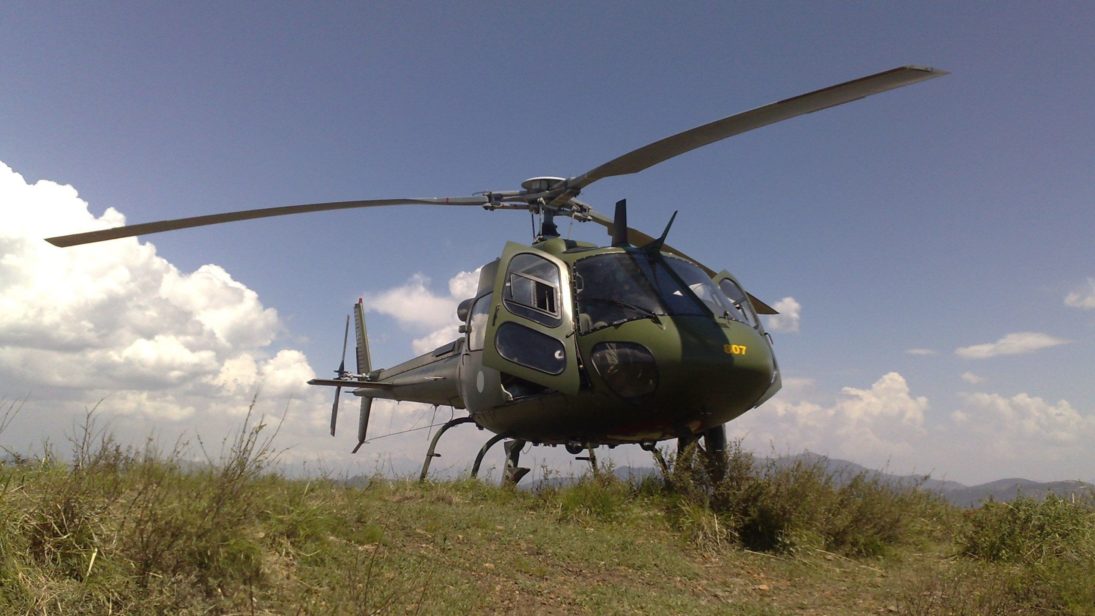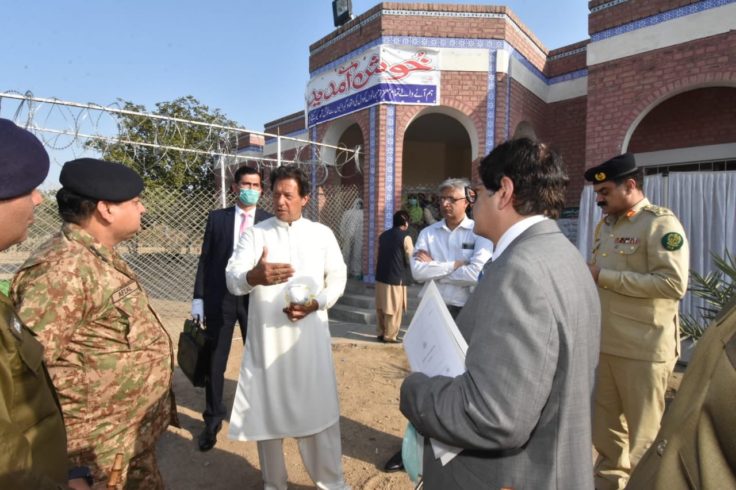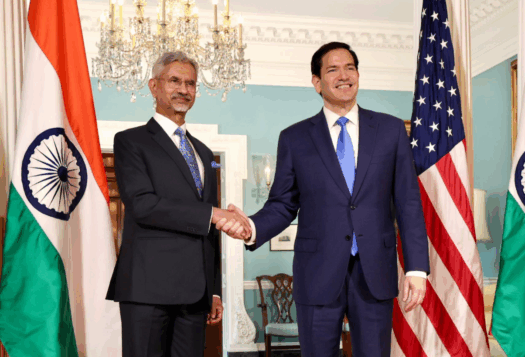
For observers of South Asian geopolitics, the Pakistan Army (PA) and its worldview have always been a subject of considerable intrigue. In the book, The Quetta Experience: Attitudes and Values within Pakistan’s Army, Colonel David O. Smith (Retd.) delves into an aspect that has remained largely understudied in the extant literature. Smith sheds light on the attitude and values of PA’s officers (of senior-level, senior mid-level, and junior mid-level) who have served at the PA Command and Staff College in Quetta between 1977 to 2014. The book demonstrates that the PA’s perspectives have remained largely unchanged over the course of 37 years, suggesting that this consistency is likely to have continued even after the study’s completion, making Smith’s analysis still topical today.
In the book, Smith covers the PA Command and Staff College’s history, structure, demography, religiosity, and education curriculum. This background provides a smooth segue into the books analysis and observations, which delve into Pakistani officers’ perceptions on four crucial areas: external threats and friendships; internal threats and friendships; the state and its institutions; and nuclear issues. The book suggests a correlation between institutional perspectives and the state’s internal and external policies. As is discussed below, Islamabad’s policy aligns greatly with the attitudes of the PA officers, confirming the conventional belief that the PA determines the trajectory of Pakistan’s internal security and foreign policy.
Perceptions of External Threats and Friendships
The Pakistan military’s perceptions of India, the United States, China, and Saudi Arabia indicates a palpable correlation between the PA’s attitudes towards these countries and the state’s foreign policy. Expectedly, there is a staunch anti-India sentiment within the Pakistan establishment, which is manifested in Pakistan’s inimical external policy towards India. Despite the study’s findings that junior officers (particularly in the Pakistan Air Force and Navy) seemed less intransigent on the India threat than the senior officers, the dominant narrative of the Staff College and the institution at large remains vehemently anti-India, as captured in Pakistan’s India policy.
Concerning the United States, the general perception prevails that it is an unreliable and erratic partner, which has periodically “used” Islamabad for its interests and abandoned it soon after. The case of the Pressler sanctions remains embedded in the memory of a majority of the officers. Some blame Washington for bringing instability to the region by decamping instantaneously after the Soviet’s withdrawal from Afghanistan. The persistent mistrust is reflected in Pakistan’s external policy towards the United States, which is characterized by a reluctance to embrace Washington as a partner or refusal to match American expectations of counter-terrorism strategies.
Many officers appear to be pragmatic about China’s partnership with Pakistan, contending that it is more about Beijing’s own interest than the claimed brotherly love.
Despite the deep distrust towards Washington and disappointment with its policies, Pakistani officers consider the U.S. military, doctrines, technology, and equipment superior to other countries. This indicates that in the future Islamabad may be willing to partner with Washington in areas where it is likely to accrue potential benefits from the United States.
Smith further argues that despite the over-the-top rhetoric on the China-Pakistan friendship, findings suggest that these sentiments are not evident on the ground. Many officers appear to be pragmatic about China’s partnership with Pakistan, contending that it is more about Beijing’s own interest than the claimed brotherly love. The PA’s realistic expectations explain why Islamabad is relatively understanding of some Chinese actions and even silent on certain developments which may have been a point of major contention otherwise. Some examples of this include China’s decision to drop its objection to the United Nations designation of Masood Azhar (leader of Jaish-e-Mohammed) as a global terrorist, Islamabad’s decision to halt investigations into the trafficking of Pakistani girls to China, and the impact of Beijing’s persecution of Uighur Muslims on some Pakistani families.
Likewise, Pakistani officers appear unsure if they can rely on China to offer active assistance to Pakistan in an India-Pakistan conflict. The pragmatism of the officers regarding China indicates that they do not bear unreasonable expectations from it and may focus more on what can be achieved through Chinese partnerships. This implies that despite Indian concerns, China may not actively collude with Pakistan to hurt India in case of an Indo-Pakistan crisis.

Regarding Saudi Arabia, the book reveals that Pakistani officers perceive the strategic partnership to be of limited value compared to the West’s partnership, as is exemplified in Pakistan’s Saudi policy. Despite the religious affinity with Saudi Arabia, there is little enthusiasm towards the country or its military. For decades, when the premise of religion and mutual benefits was an adequate facilitator, the bilateral ties were sustained. However, in the last decade, Riyadh and Islamabad’s ties have weakened, and the religious angle seems insufficient to keep the relationship strong. The growing proximity between India and Saudi Arabia and Pakistan’s increasing closeness to Iran and Turkey has further complicated Pakistan-Saudi relations.
Perceptions of Internal Security Threats
Apart from external threats, the PA’s perceptions of internal security threats and the state’s counter-terrorism policy are also related. Smith asserts that from the 1970s to the 1990s, the security landscape in Pakistan was relatively benign despite an ongoing insurgency in Balochistan, which was not considered a top priority for the government and was “‘managed’ from time to time,” and a growing “Kalashnikov culture” of informal weapon transfers across the Durand Line. However, the 2001 U.S. military operations in Afghanistan severely impacted Pakistan’s security environment, which worsened post-2009. As the PA tried to counter the threat of anti-Pakistan militant groups such as the Tehreek-e-Taliban Pakistan and the Tehreek-e-Nafaz-e-Shariat Mohammadi, it suffered significant casualties and grew less sanguine about the internal security threat.
Pakistani officers (mostly belonging to junior and mid-level positions) who had participated in counter-terrorism operations in erstwhile Federally Administrated Tribal Areas believed that the internal security threat was more tangible than the Indian security threat to the country. Nevertheless, the Directing Staff (DS) at the College still prioritized the Indian threat over internal threats. The curriculum—traditionally focused on conventional operations against India—evolved incrementally with growing internal security threats. The Staff College characterised internal security operations as Sub-Conventional Warfare (SCW), which centered largely on kinetic operations “to just squash [the militants]” rather than “winning the hearts and minds” of the local civilian population. Some officers also believed that anyone killed in military operations “deserved it.” The prevailing attitudes combined with a focus on kinetic operations produced a lethal internal security strategy as reflected in Zarb-e-Azb and Radd-ul-Fasaad operations, which have resulted in mass human rights violations, such as extrajudicial killings of, especially, Pashtun communities.
Smith notes that even as Pakistan grapples with the threat of militant groups, the PA officers support the practice of nurturing anti-India militant groups to meet their military and political objectives. As stated by a Commandant when summing up the major lessons of an SCW exercise at the Staff College: “We have our own insurgents, and, if need be, we can use them.” The PA’s support for using militant groups against other countries (India and Afghanistan) paints a grim picture suggesting that this strategy is likely to continue unabated in South Asia and may even be ramped up if deemed important to fulfill PA’s objectives.
Attitudes Towards the State and its Institutions
In addition to external and internal security threats, the book indicates a link between the PA’s views on military and civilian governance and Pakistan’s checkered past of coups d’état. Most officers support the idea of democracy in principle but thought that Pakistan was not ready for genuine western-style democracy because its “civilian politicians were too corrupt and venal and the people too uneducated.” Many support military governance as a reasonable alternative to incompetent and corrupt politicians. Rather, when the former Army Chief General Kayani did not take over the Zardari government, it was viewed by the officers as “a favor”.
Many support military governance as a reasonable alternative to incompetent and corrupt politicians. Rather, when the former Army Chief General Kayani did not take over the Zardari government, it was viewed by the officers as “a favor”.
From the book, it could be gathered that Pakistani officers preferred military governance as long as it did not hamper the PA’s reputation and cohesion. The moment the institution’s reputation started eroding, the officers were comfortable to see a civilian leadership take over. The pattern was palpable in the changing views towards the Musharraf and Zia-ul-Haq governments. These trends provide limited hope for a “genuine” democratic turn in Pakistan. Even the current Imran Khan government has a strong backing of the military, implying that he will continue to hold the Prime Minister’s post, an observation also noted in the book. This suggests that the PA will continue to dominate the future of Pakistan’s governance, either through a civilian face or through direct military rule.
Attitudes Towards Nuclear Weapons
Besides domestic and foreign security threats, Smith’s findings on the attitude of officers towards Pakistan’s nuclear program are particularly concerning. It can be deduced from chapter five that Pakistan’s nuclear ideas are significantly influenced by American thinking during the Cold War, centering around deterring general war with a formidable enemy state. Drawing from this thinking, Pakistani military officers appear to repose a high degree of faith in nuclear weapons, including Tactical Nuclear Weapons (TNWs), to deter India. That Pakistan officers generally disregard any strategic consequences of using the TNWs is particularly concerning given New Delhi’s assertions that it does not distinguish its response based on the type of nuclear weapon used. It is important to note that Pakistan’s balancing of a nuclear fighting posture whilst maintaining a robust deterrence strategy partially contributes to India’s debate over making its No First Use (NFU) policy more flexible. That many officers regard nuclear weapons as “a poor man’s air force” feeds into Indian concerns and strengthens the anti-NFU faction in New Delhi.
Conclusion
David O. Smith’s excellent book is a must-read for academics, policymakers, and foreign policy enthusiasts alike. As China-Pakistan relations garner increasing attention, it would have been worthwhile if the book had probed the officers’ perceptions of the Chinese mistreatment of Muslims in Xinjiang. One wonders if the Pakistan military looks at the Xinjiang issue through the prism of religion or simply through realpolitik, considering that Pakistan views the Kashmir dispute through the lens of religion, in addition to its strategic considerations, and presents itself as a champion of Muslims worldwide. It would have been equally rewarding to probe if civilian perspectives in Pakistan align with the perspectives of PA officers. Nevertheless, the identified correlations, as well as the consistency in PA’s institutional thinking, offers a better understanding of the broader South Asian security trends for observers and policymakers. Apart from allowing the readers to peek into the minds of the PA, it provides a great starting point to study in detail the linkages between Pakistan’s institutional perceptions and foreign policies.
Editor’s Note: This article is part of the South Asian Voices series: “Reviewing the Quetta and Wellington Experience,” in which SAV contributors discuss Col. (retd.) David Smith’s two books The Quetta Experience: A Study of Attitudes and Values Within Pakistan’s Army and The Wellington Experience: A Study of Attitudes and Values Within the Indian Army. The full series can be read here. The SAV webinar, featuring David Smith and the series contributors Brig. (retd.) Naeem Salik, Reshmi Kazi, Sadia Tasleem, and Aditi Malhotra can be watched here.
***
Image 1: Al Jazeera English via Flickr


